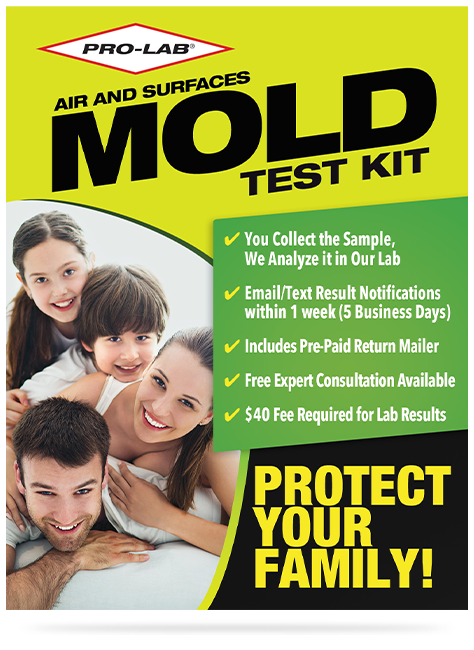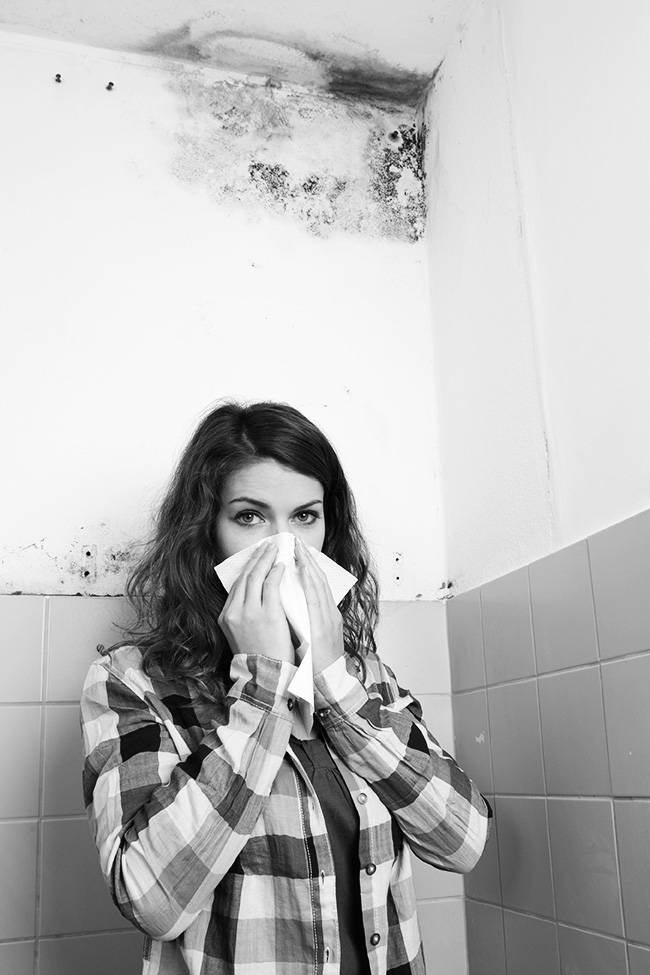
MOLD
Test Kit
Our simple do-it-yourself test will determine the presence of mold, pollen and dust mites in the sample submitted.
PRO-LAB® Test Kits are available to the general public at over 40,000 leading home centers, hardware stores, pharmacy chains, supermarkets, and a wide category of specialty outlets. Stores include The Home Depot, Lowe’s, Menards, Ace Hardware, True Value, Do It Best, Kroger, Fred Meyer, Giant Eagle, and CVS.
If you cannot find the PRO-LAB® Mold Test Kit in any of the stores above, please call 954-384-4446 to purchase.
PRO-LAB’s Black Mold Test Kit utilizes patented laboratory analytical method for accuracy and reliability. To help detect the possibility of mold, do you notice any of the following?
If you answered YES to any of the above questions, then you could be EXPOSED TO TOXIC BLACK MOLD!
What is Mold and Where Is It Found?
Mold are microscopic organisms that produce spores and are found virtually everywhere, indoors and outdoors. Mold can be found on plants, foods, dry leaves, and other organic material. Also susceptible to mold growth are cellulose materials, such as, cardboard, paper, ceiling tiles, and sheet rock. Mold spores are easily detached and made airborne by vacuuming, walking on a carpet or sitting on a couch. In indoor environments, mold can grow in air conditioning ducts, carpets, pots of houseplants, etc.
How Can Mold Affect Your Health?
Exposure to mold is not healthy for anyone but the following individuals are at a higher risk for adverse health effects: infants, children, elderly, immune compromised patients, pregnant women, and individuals with existing respiratory conditions. When inhaled, even in small amounts, mold can cause a wide range of health problems including respiratory problems (wheezing), nasal and sinus congestion, watery and red eyes, nose and throat irritation, skin irritation, aches and pains, fevers, asthma, emphysema and in some cases even death.
Mold Can Be Found In Many Areas Of Your Home

How Can You Be Exposed To Mold?
When moldy materials become damaged or disturbed, spores (reproductive bodies similar to seeds) can be released into the air. The following are sources of indoor moisture that may cause mold problems in your home or office: flooding, leaky roofs, humidifiers, damp basements or crawl spaces, constant plumbing leaks, house plants, steam from cooking, shower/bath steam and leaks, wet clothes, and clothes dryers vented indoors. Protection…Testing Is Your First Line Of Defense
To find out if mold is a problem in your home or office, you must conduct a mold test!
The PRO-LAB Mold Test Kit utilizes a patented laboratory analytical method for accuracy and reliability. The easy to use do-it-yourself test allows you to determine whether toxic mold, pollen or dust mites are present in your sample.
The Black Mold Stachybotrys Chartarum (atra)
Stachybotrys Chartarum (atra) is a greenish-black toxic mold that colonizes particularly well in high-cellulose material, such as straw, hay, wet leaves, dry wall, carpet, wall paper, fiber-board, ceiling tiles, thermal insulation, etc. Stachbotrys, before drying, is wet and slightly slimy to touch. There are about 15 species of Stachybotrys, known throughout the world. This toxic mold grows in areas where the relative humidity is above 55%. This type of mold does not grow on plastic, vinyl, concrete products, or ceramic tiles. It is not found in the green mold on bread or the black mold on the shower tiles.
Stachybotrys produces a mycotoxin that causes human mycotoxicosis.
This type of mold is thought to be a possible cause of the sick building syndrome. Children’s exposure to Stachybotrys spores are thought most likely to cause pulmonary hemosiderosis (bleeding in the lungs). The following is a list of symptoms associated with exposure to Stachybotrys mold spores:
- Respiratory problems, such as wheezing, and difficulty in breathing
- Nasal and sinus congestion
- Eyes-burning, watery, reddened, blurry vision, light sensitivity
- Dry, hacking cough
- Sore throat
- Nose and throat irritation
- Shortness of breath
- Chronic fatigue
- Skin irritation
- Central nervous system problems (constant headaches, memory problems, and mood changes)
- Aches and pains
- Possible fever
- Diarrhea
- Possible hemosiderosis
- Immune suppression

